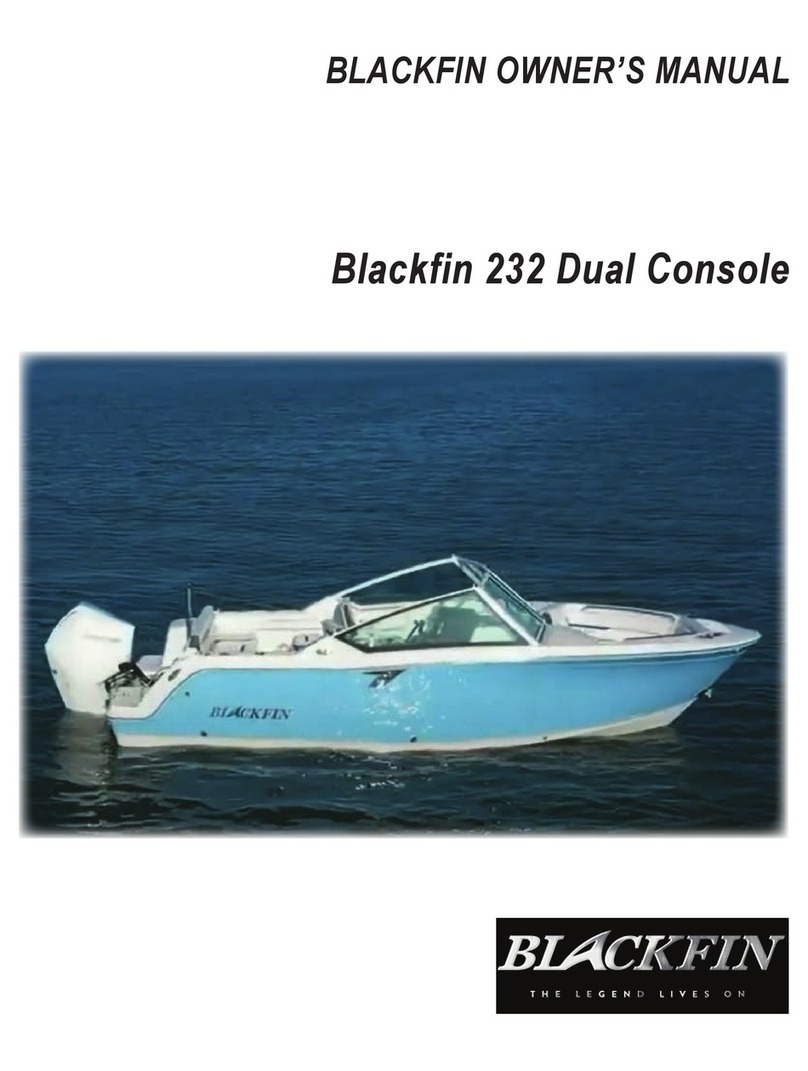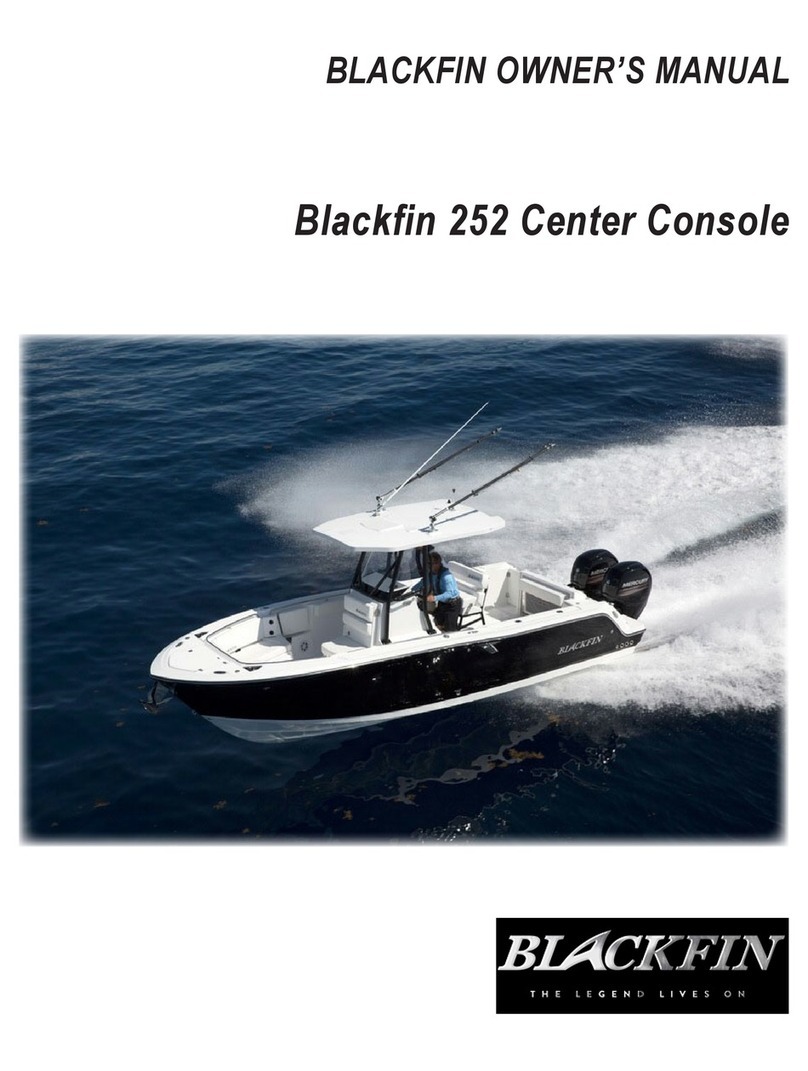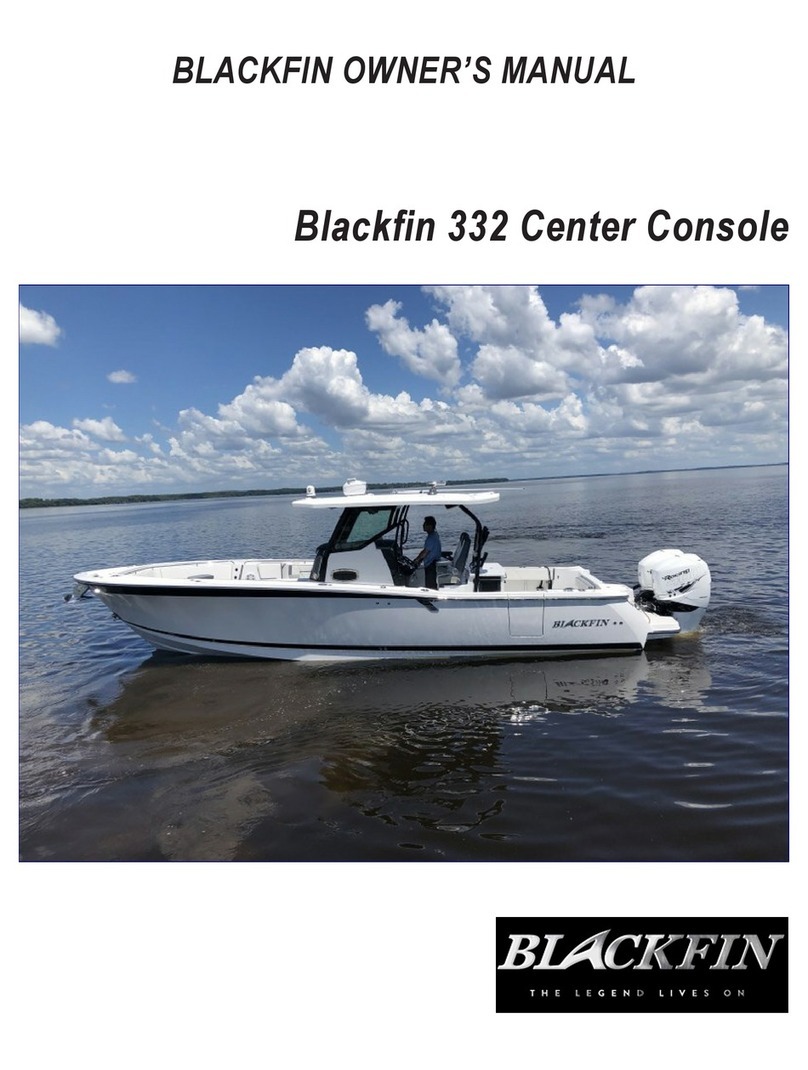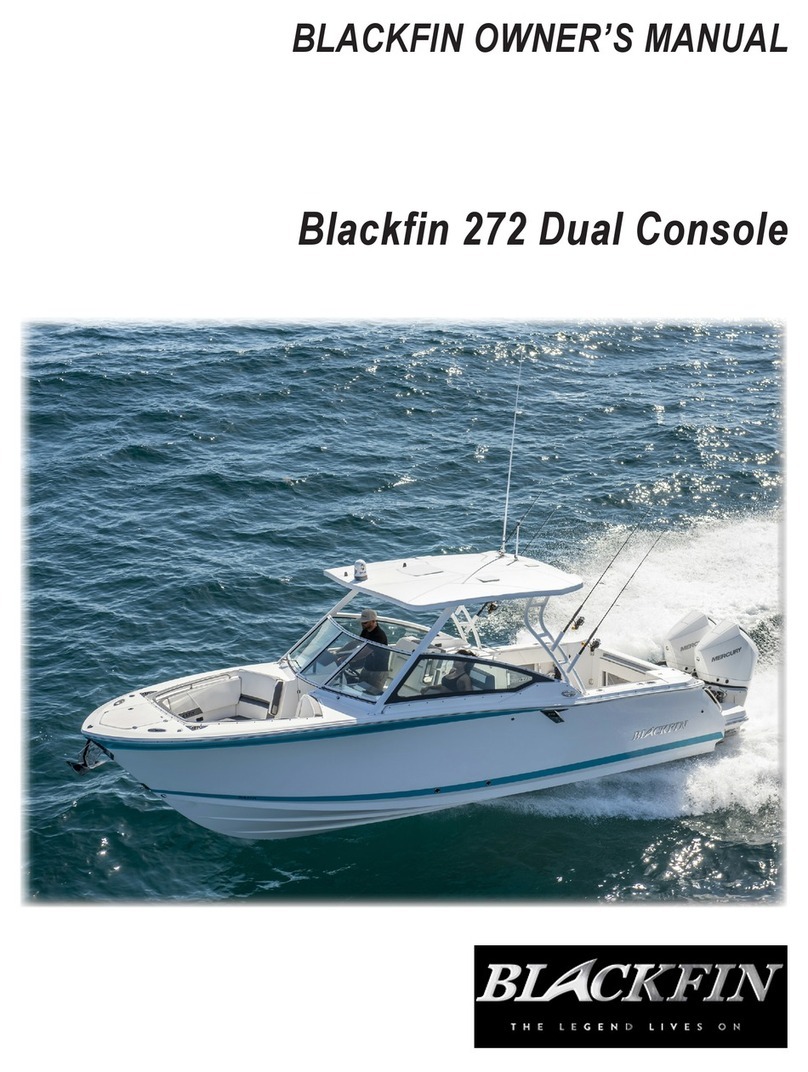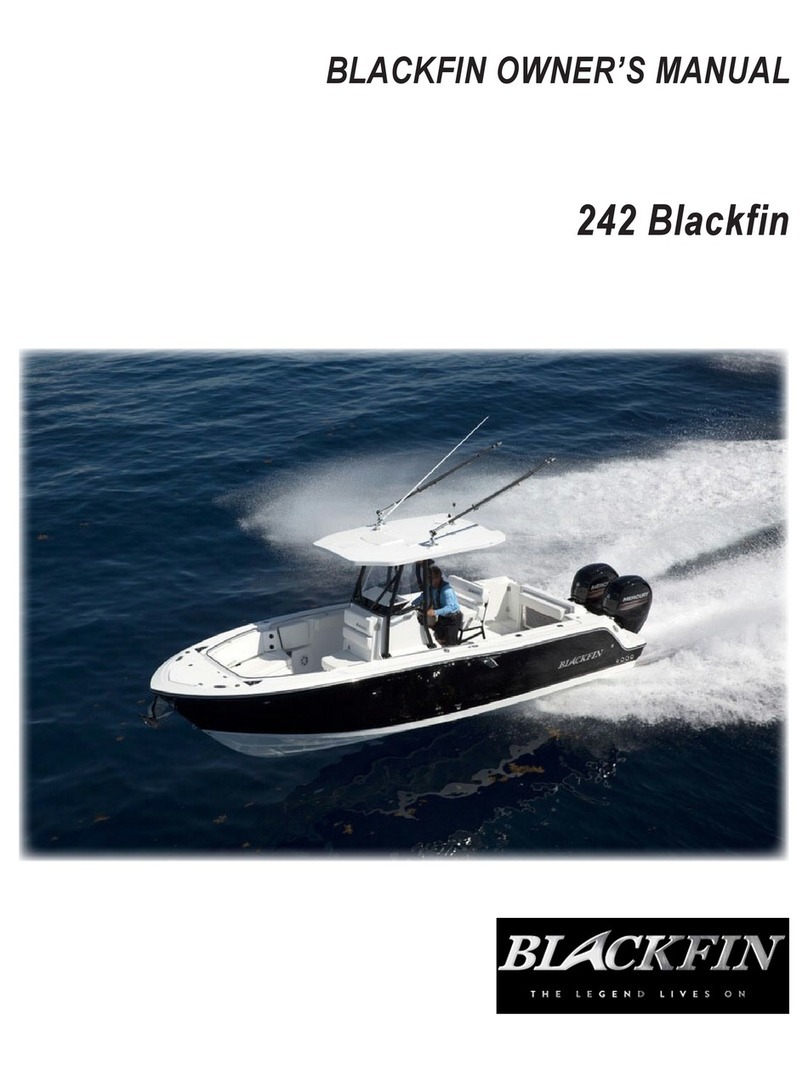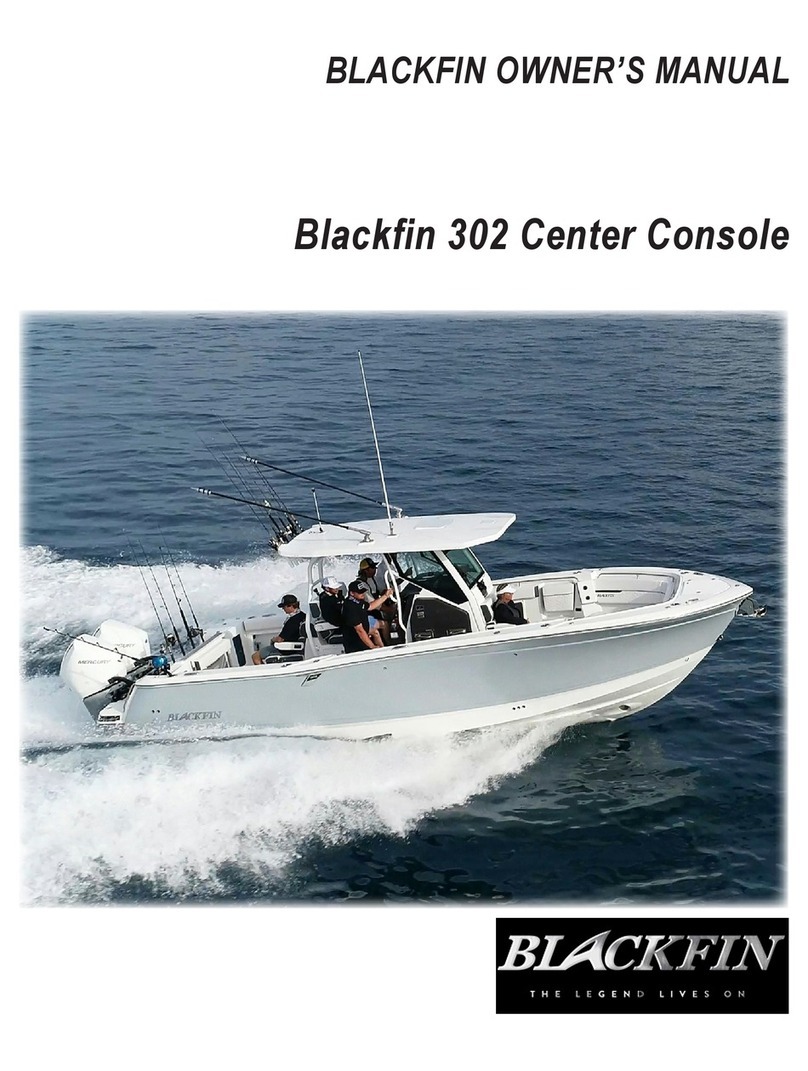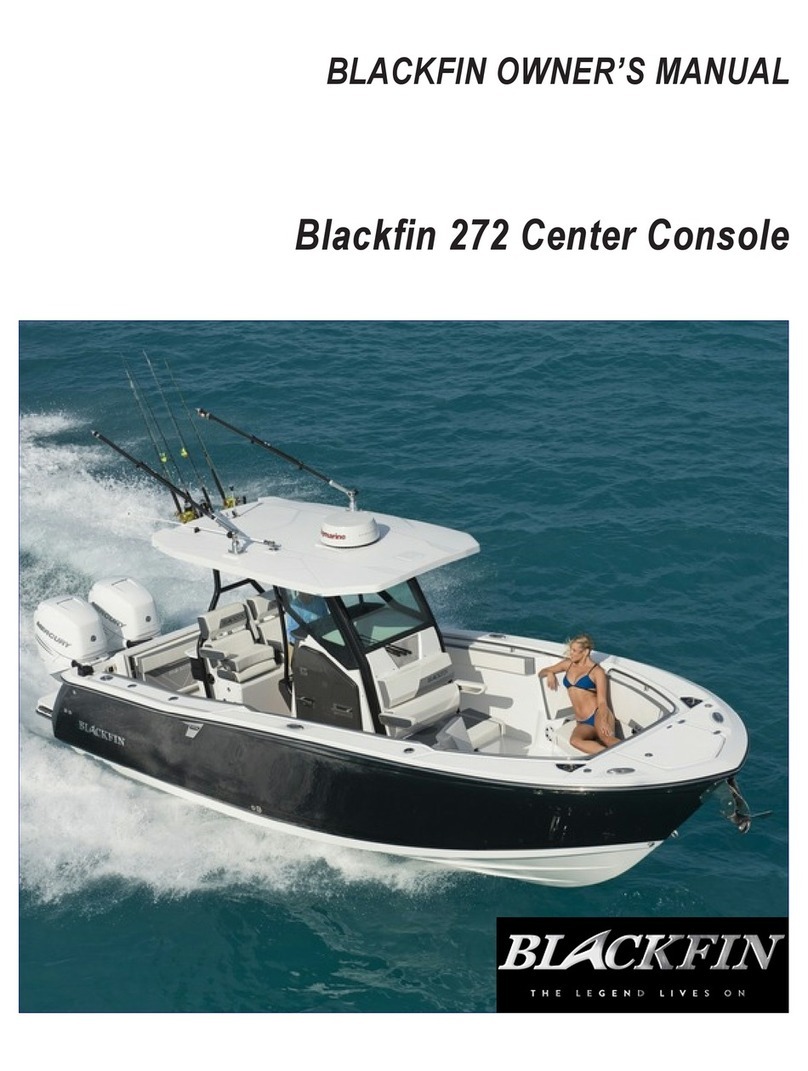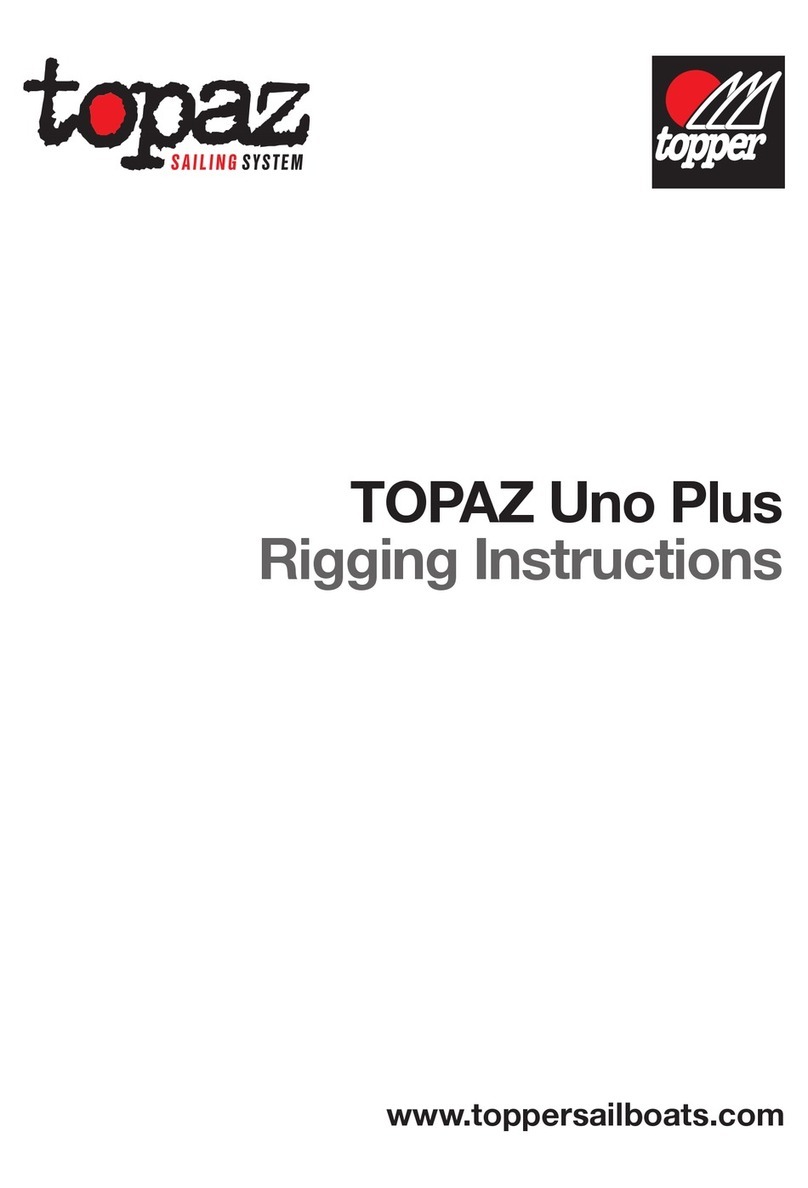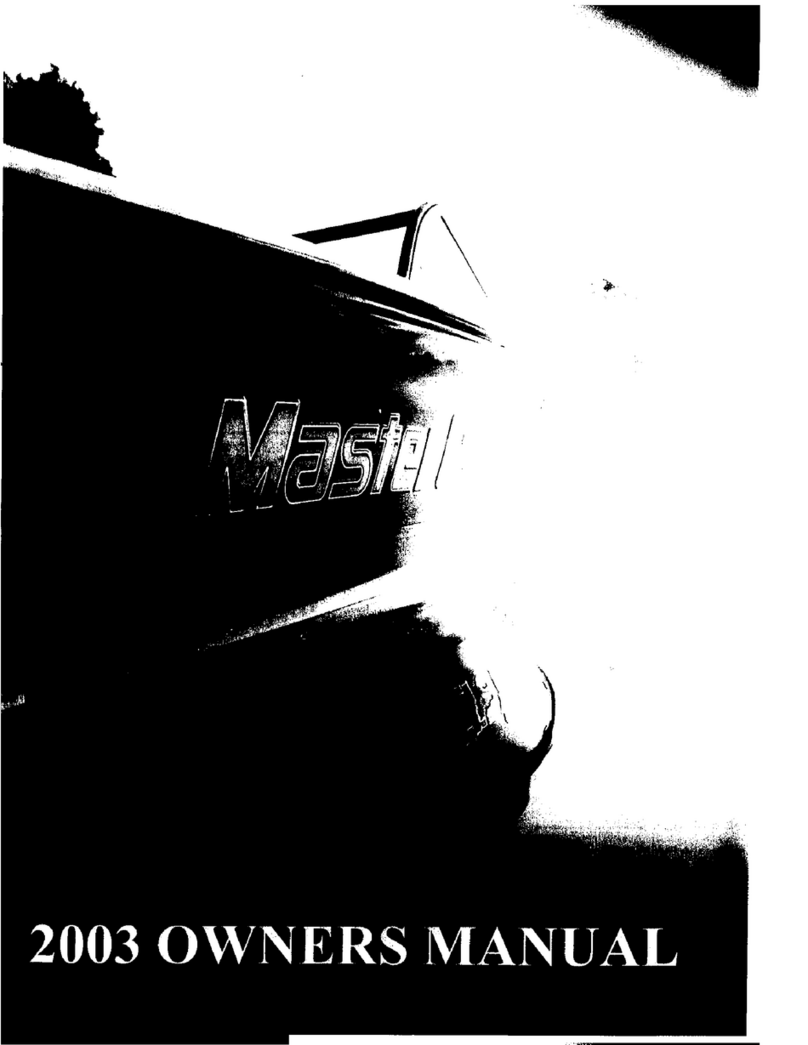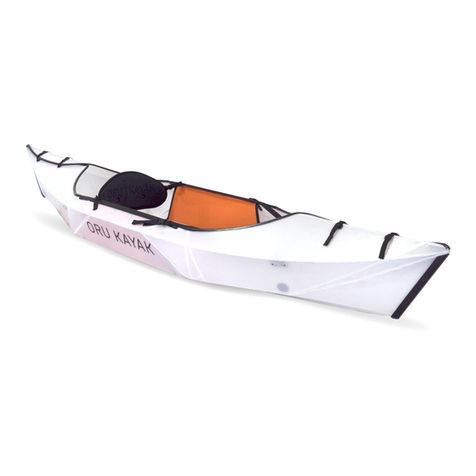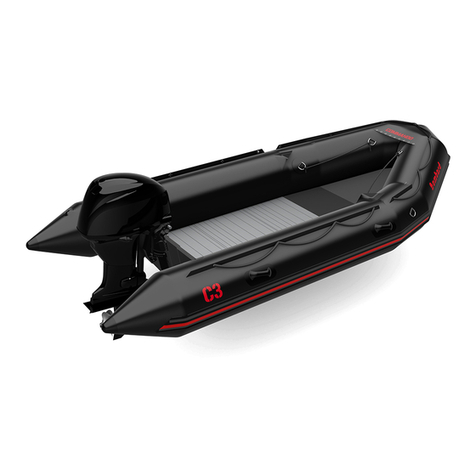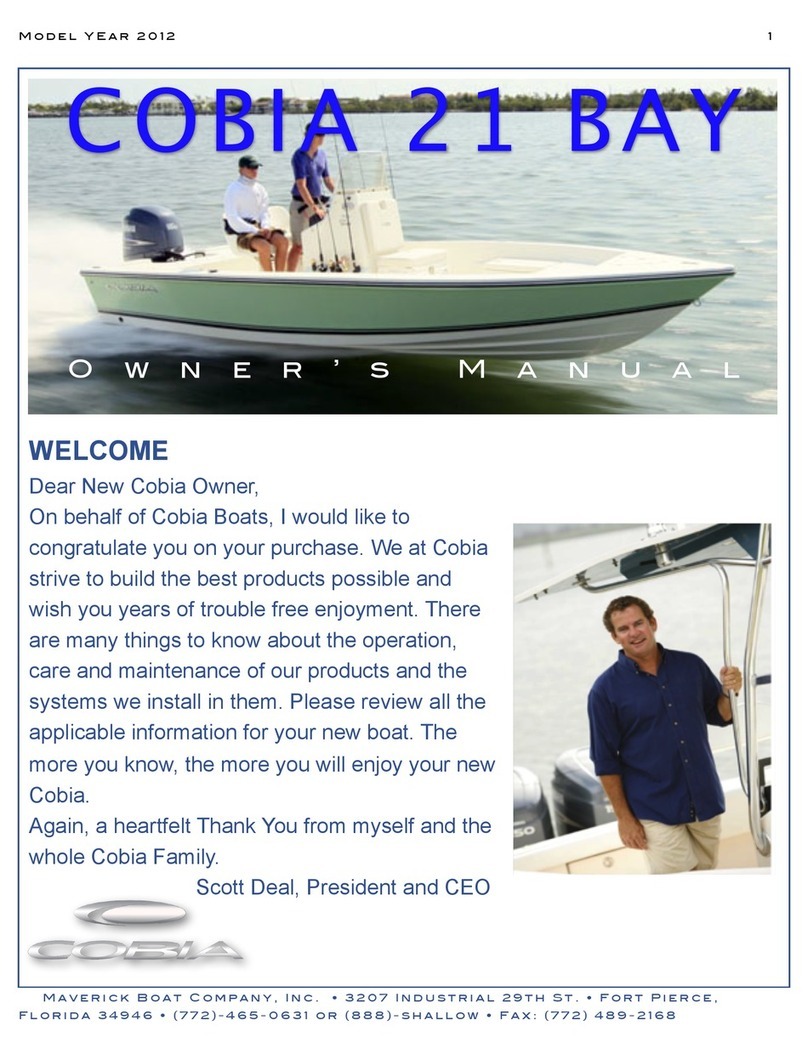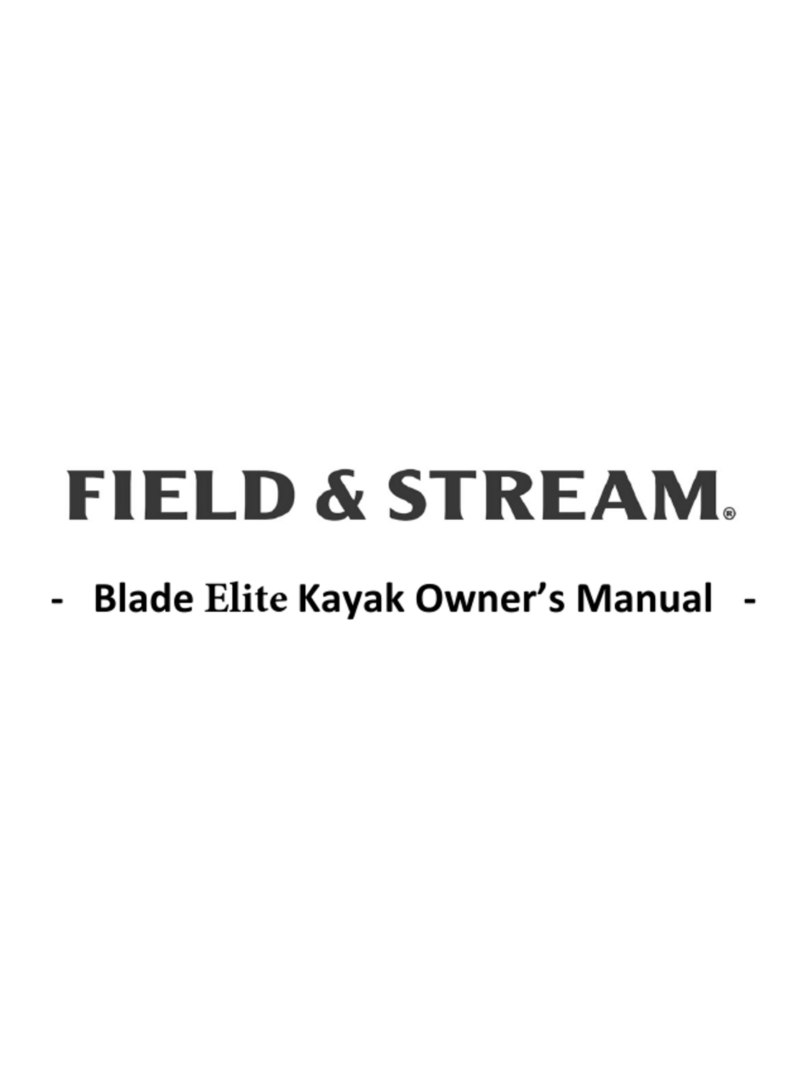
13
All instructions given in this book are as seen from
the stern looking toward the bow with starboard
being to your right, and port to your left. The
information and precautions listed in this manual
are not all inclusive. It may be general in nature
in some cases and detailed in others and is de-
signed to provide you a basic understanding of
your Blackn and some of the responsibilities that
go along with owning/operating your boat.
The suppliers of some of the major components
such as the engines, pumps, and appliances,
provide their own owner’s manuals which have
been included with your boat. You should read
the information in this manual and the manuals of
other suppliers completely and have a thorough
understanding of all component systems and their
proper operation before operating your boat.
REMEMBER - IT IS YOUR RESPONSIBILITY TO ENSURE THAT
YOUR BOAT IS SAFE FOR YOU AND YOUR PASSENGERS.
ALWAYS EXERCISE GOOD COMMON SENSE WHEN
INSTALLING EQUIPMENT AND OPERATING THE BOAT.
Warranty and Warranty Registration Cards
The Blackn Limited Warranty Statement is included
with your boat. It has been written to be clearly
stated and easily understood. If you have any
questions after reading the warranty, please contact
your Blackn dealer.
Blackn, engine manufacturers, and the suppliers
of major components maintain their own manufac-
turer’s warranty and service facilities. It is important
that you properly complete the warranty registra-
tion cards included with your boat and engines and
mail them back to the manufacturer to register your
ownership. This should be done within 15 days of
the date of purchase and before the boat is put into
service. A form for recording this information for
your records is provided at the beginning of this
manual. This information will be important for you
and service personnel to know, if and when you may
need service or technical information.
The boat warranty registration requires the Hull
Identication Number “HIN” which is located on
the starboard side of the transom, just below the
rubrail. The engine warranty registration requires
the engine serial numbers. Refer to the engine own-
er’s manual for the location of the serial numbers.
IMPORTANT:
The terms and conditions of the Blackn Boats
Limited Warranty are outlined in the warranty
statement in your owner’s packet. The manufac-
turer will automatically honor the warranty to the
original purchaser for 15 days from the date of
purchase. However, during that 15 day period,
owners must comply with the steps outlined in
the warranty statement to validate their warranty.
All boat manufacturers are required by the Federal
Boat Safety Act of 1971 to notify rst time own-
ers in the event any defect is discovered “which
creates a substantial risk of personal injury to
the public.” It is essential that we have your
warranty registration card complete with
your name and mailing address in our les so
that we can comply with the law if it should
become necessary.
Your Blackn Boats Dealer will assist you in lling
in the hull number and other data required on your
Registration Card. Check to see that your card
is complete and signed. Detach and mail. Your
Warranty Registration Card will be added to our
permanent les.
Notice:
Your dealer will also submit the registration
electronically “on-line.”
Transferring the Limited Structural Warranty
For a transfer fee, Blackn BOATS will oer to
extend a Transferable Limited Structural Hull
Warranty to the second owner of Blackn boats.
Refer to the Blackn Limited Warranty Statement
for the terms and conditions of the Transferable
Limited Structural Hull Warranty and the procedure
to transfer the warranty.
Product Changes
Blackn is committed to the continuous improve-
ment of our boats. As a result, some of the equip-
ment described in this manual or pictured in the
catalog may change or no longer be available. All
information, illustrations, and specications
contained in this manual are based on the
latest product information available at the
time of publication. Blackn Boats reserves
the right to make changes at anytime, with-
out notice, in colors, materials, equipment,
specications, and models. If you have ques-
INTRODUCTION & IMPORTANT INFORMATION




















